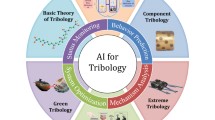Abstract
This study focuses on the real-time prediction of mechanical properties such as internal bond strength (IB) and modulus of rupture (MOR) for a wood composite panels manufacturing process. As wood composite panel plants periodically test their products, a real time data fusion application was developed to align laboratory mechanical test results and their corresponding process data. Fused data were employed to build regression models that yield real-time predicted mechanical property values when new process data become available. The modeling algorithm core uses genetic algorithm to preselect a meaningful subset of process variables. Calibration models are then built using several regression methods: multiple linear regression, ridge regression, neural networks, and partial least squares regression (PLS). Four different predicted response values were generated for each new record of real time process variables. On-line validation results showed good performance of the ridge regression method with a 0.89 correlation coefficient between actual and predicted MOR values, a root mean square error (RMSEP) of 1.05 MPa and a mean normalized error of 9 %. IB was best predicted by PLS with a 0.81 correlation coefficient between actual IB and PLS predicted IB values, a RMSEP of 75.1 kPa, and a mean normalized error of 15 %.
Zusammenfassung
Diese Studie beschäftigt sich mit der Echtzeitvorhersage mechanischer Eigenschaften wie der Querzugfestigkeit (IB) und der Biegefestigkeit (MOR) bei der Herstellung von Holzwerkstoffen. Da die Holzwerkstoffindustrie regelmäßig ihre Produkte prüft, wurde ein Verfahren zur Echtzeit-Datenfusion entwickelt, um die Ergebnisse mechanischer Laborprüfungen mit entsprechenden Prozessdaten zusammenzuführen. Diese Datensätze wurden zur Entwicklung von Regressionsmodellen verwendet, welche in Echtzeit vorhergesagte mechanische Kennwerte liefern, wenn neue Prozessdaten verfügbar sind. Der Modellalgorithmus bedient sich eines genetischen Algorithmus zur Vorauswahl einer aussagekräftigen Teilmenge von Prozessvariablen. Anschließend werden anhand verschiedener Regressionsverfahren (multiple lineare Regression, Ridge-Regression, neurale Netzwerke sowie Partial-Least-Square Regression (PLS)) Kalibrierungsmodelle erstellt. Für jeden neuen Satz von Echtzeit-Prozessvariablen wurden vier verschiedene Response-Variablen generiert. Online-Validierungsergebnisse zeigten ein gutes Ergebnis für das Ridge-Regressionsverfahren mit einem Korrelationskoeffizienten von 0,89 zwischen den im Labor bestimmten und den vorhergesagten Festigkeitswerten, einem mittleren vorhergesagten Fehler (RMSEP) von 1,05 MPa und einem mittleren normalisierten Fehler von 9 %. Die Querzugfestigkeit wurde am besten mit PLS vorhergesagt. Der Korrelationskoeffizient zwischen der im Labor bestimmten und der mittels PLS vorhergesagten Querzugfestigkeit betrug 0,81, der mittlere vorhersagbare Fehler 75,1 kPa und der mittlere normalisierte Fehler 15 %.






Similar content being viewed by others
References
American Forest & Paper Association. http://www.afandpa.org/ourindustry.aspx?id=35. Accessed 27 June 2012
André N, Cho H-W, Baek SH, Jeong M-K, Young TM (2008) Prediction of internal bond strength in a medium density fiberboard process using multivariate statistical methods and variable selection. Wood Sci Technol 42(7):521–534
André N, Young TM, Zaretzki P (2010) Real-time process modeling of wood composite panels. In: Proceedings of the 1st processing technologies for the forest and biobased products industries, pp 28–33
ASTM standard (2006) D1037. Standard test methods for evaluating properties of wood-base fiber and particle panel materials
Bernardy G, Scherff B (1998) Saving costs with process control engineering and statistical process optimisation: uses for production managers, technologists and operators. In: Proceedings of the 2nd European panel products symposium, pp 95–106
Chipperfield AJ, Fleming PJ, Fonseca CM (1994) Genetic algorithm tools for control systems engineering. In: 2nd international conference on adaptive computing in engineering design and control, Plymouth, UK
Composite Panel Association (2004) 2004 North American capacity report. Gaithersburg, USA, p 14
Confederation of European Forest Owners. http://www.cepf-eu.org/policy.cfm?ID_kanal=45. Accessed 27 June 2012
Cook DF, Chiu CC (1997) Predicting the internal bond strength of particleboard utilizing a radial basis function neural network. Eng Appl Artif lntel 10(2):171–177
Engström B, Johnsson B, Hedquist M, Grothage M, Sundström H, Ärlebrandt A (1998) Process modelling system for particleboard manufacturing, incorporating near infrared spectroscopy on dried wood particles. In: Proceedings of the 2nd European panel products symposium, pp 107–114
Esbensen KH (2001) Multivariate data analysis—In practice. Camo Process AS
Gourvénec S, Capron X, Massart DL (2004) Genetic algorithms (GA) applied to the orthogonal projection approach (OPA) for variable selection. Anal Chim Acta 519:11–21
Hagan MT, Demuth HB, Beale MH (1996) Neural network design. PWS Publishing, Boston
Hoerl AE, Kennard RW (1970) Ridge regression: biased estimation for non orthogonal problems. Technometrics 12(1):55–67
Jin J, Dai C, Hsu WE, Yu C (2009) Properties of strand boards with uniform and conventional vertical density profiles. Wood Sci Technol 43(7–8):559–574
Leardi R (2001) Genetic algorithms in chemometrics and chemistry: a review. J Chemometr 15:559–569
Maloney TM (1993) Modern particleboard and dry-process fiberboard manufacturing, Updated edition. Miller Freeman Inc., San Francisco
Mehmood T, Liland KH, Snipen L, Sæbø S (2012) A review of variable selection methods in partial least squares regression. Chemometr Intell Lab 118(2012):62–69
Qin SJ (2003) Statistical process monitoring: basics and beyond. J Chemometr 17:480–502
Schwarz GE (1978) Estimating the dimension of a model. Ann Stat 6(2):461–464
Sewell G (2005) Computational methods of linear algebra, 2nd edn. Wiley, Hoboken
Sjöblom E, Johnsson B, Sundström H (2004) Optimization of particleboard production using NIR spectroscopy and multivariate techniques. Forest Prod J 54(6):71–75
Wong ED, Zhang M, Wang Q, Kawai S (1999) Formation of the density profile and its effects on the properties of particleboard. Wood Sci Technol 33(4):327–340
Young TM, Guess FM (2002) Developing and mining higher quality information in automated relational databases for forest products manufacture. Int J Reliab Appl 3(4):155–164
Young TM, André N, Huber CW (2004) Predictive modeling of the internal bond of MDF using genetic algorithms with distributed data fusion. In: Proceedings of the 8th European panel products symposium, pp 45–59
Author information
Authors and Affiliations
Corresponding author
Rights and permissions
About this article
Cite this article
André, N., Young, T.M. Real-time process modeling of particleboard manufacture using variable selection and regression methods ensemble. Eur. J. Wood Prod. 71, 361–370 (2013). https://doi.org/10.1007/s00107-013-0689-0
Received:
Published:
Issue Date:
DOI: https://doi.org/10.1007/s00107-013-0689-0




